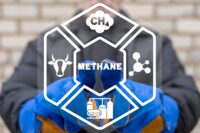An Axios analysis of records obtained by the Data Liberation Project reveals the top three chemicals involved in most chemical accidents reported to the EPA over the past 20 years. Those chemicals are: Industry sources that regularly use these chemicals are advised to take note and ensure all precautions are in place to safely deal […]
An analysis conducted by Enverus Intelligence Research (EIR), a subsidiary of the energy-focused software-as-a-service firm Enverus, predicts that proposed changes to Subpart W of the Greenhouse Gas (GHG) Reporting Program “would more than double 2021 reported methane and increase overall carbon dioxide-equivalent emissions by 41%,” an EIR news release states. Purpose of the revisions The […]
According to research findings from the National Safety Council (NSC), investments in technology to reduce workplace musculoskeletal disorders (MSDs) can improve both worker well-being and an organization’s bottom line, the NSC announced October 4. However, employers may not have the access and knowledge they need to effectively assess and implement risk-reducing technologies, according to the […]
On this week’s episode of EHSDA Shorts, we hear from Jeramy Hurt, Director of EHS Solutions at Ideagen, about the performance metrics he uses to measure progress. Tune in to hear his insights.
The new final rule requiring reporting on all six fiber types of asbestos went into effect August 24, 2023. Issued under Section 8(a) of the Toxic Substances Control Act (TSCA), the rule requires asbestos manufacturers (including importers) and processors to report certain use and exposure information from the past four years, including information on asbestos-containing […]
Most sharps injuries—84 percent—occur among healthcare workers, the National Institute for Occupational Safety and Health (NIOSH) confirmed in a recently released analysis. Injuries from a needle or other sharp objects can expose workers to bloodborne pathogens (BBP), such as human immunodeficiency virus, hepatitis B, hepatitis C, and other infectious diseases, NIOSH said in the September […]
California’s Climate Corporate Data Accountability Act (SB 253) was approved by the state assembly’s Committee on Natural Resources in July 2023. If passed into law, it will require U.S. companies doing business in California with annual revenues exceeding $1 billion to annually report on greenhouse gas (GHG) emissions, including supply chain disclosures, beginning with reporting […]
The EPA recently announced its final rule requiring reporting on all six fiber types of asbestos. Issued under Section 8(a) of the Toxic Substances Control Act (TSCA), the rule requires asbestos manufacturers (including importers) and processors to report certain use and exposure information from the past 4 years, including information on asbestos-containing products (including as […]
The U.S. Chemical Safety and Hazard Investigation Board (CSB) released a final report on a hydrogen chloride (HCl) release at the Wacker Polysilicon North American facility in Charleston, Tennessee. A worker was fatally injured in the incident. The CSB found that at the time of the incident in November 2020, there were multiple contract workers […]
In the event OSHA comes out and inspects your workplace for dangers and issues citations, one of the first things they’ll look at is your establishment’s injury and illness records, aka your OSHA Form 300. Here’s what you need to know about the OSHA 300 Log.










